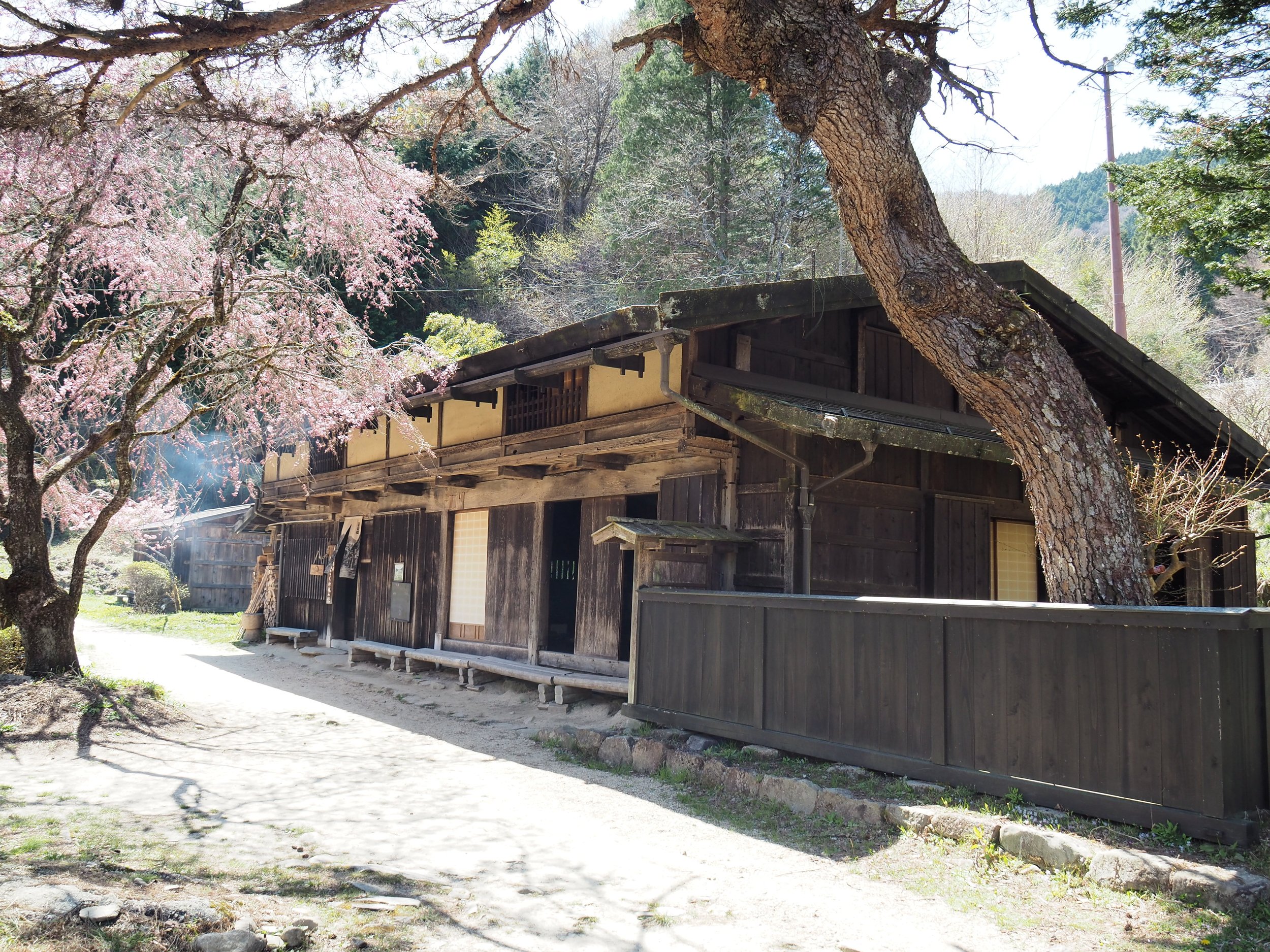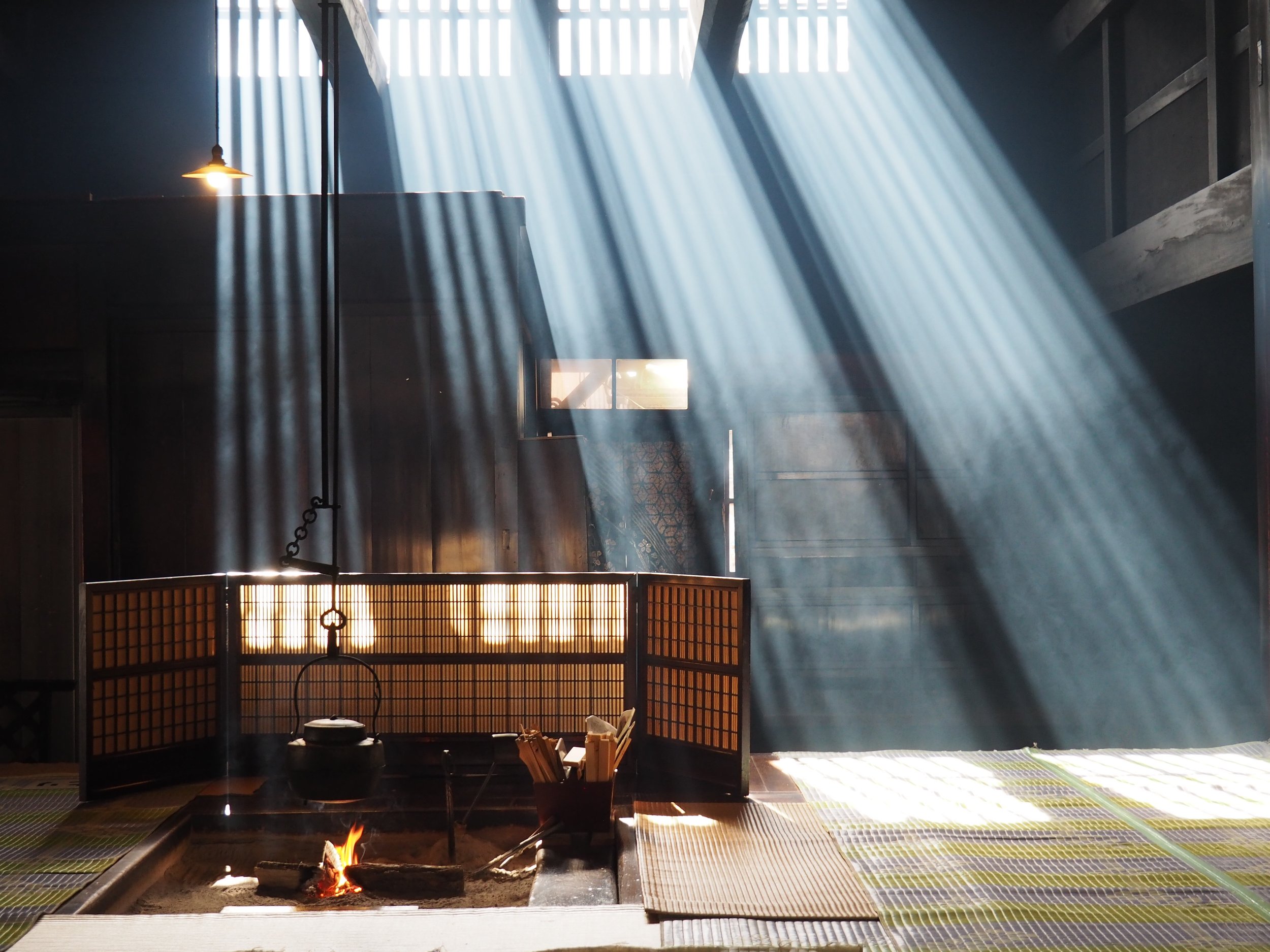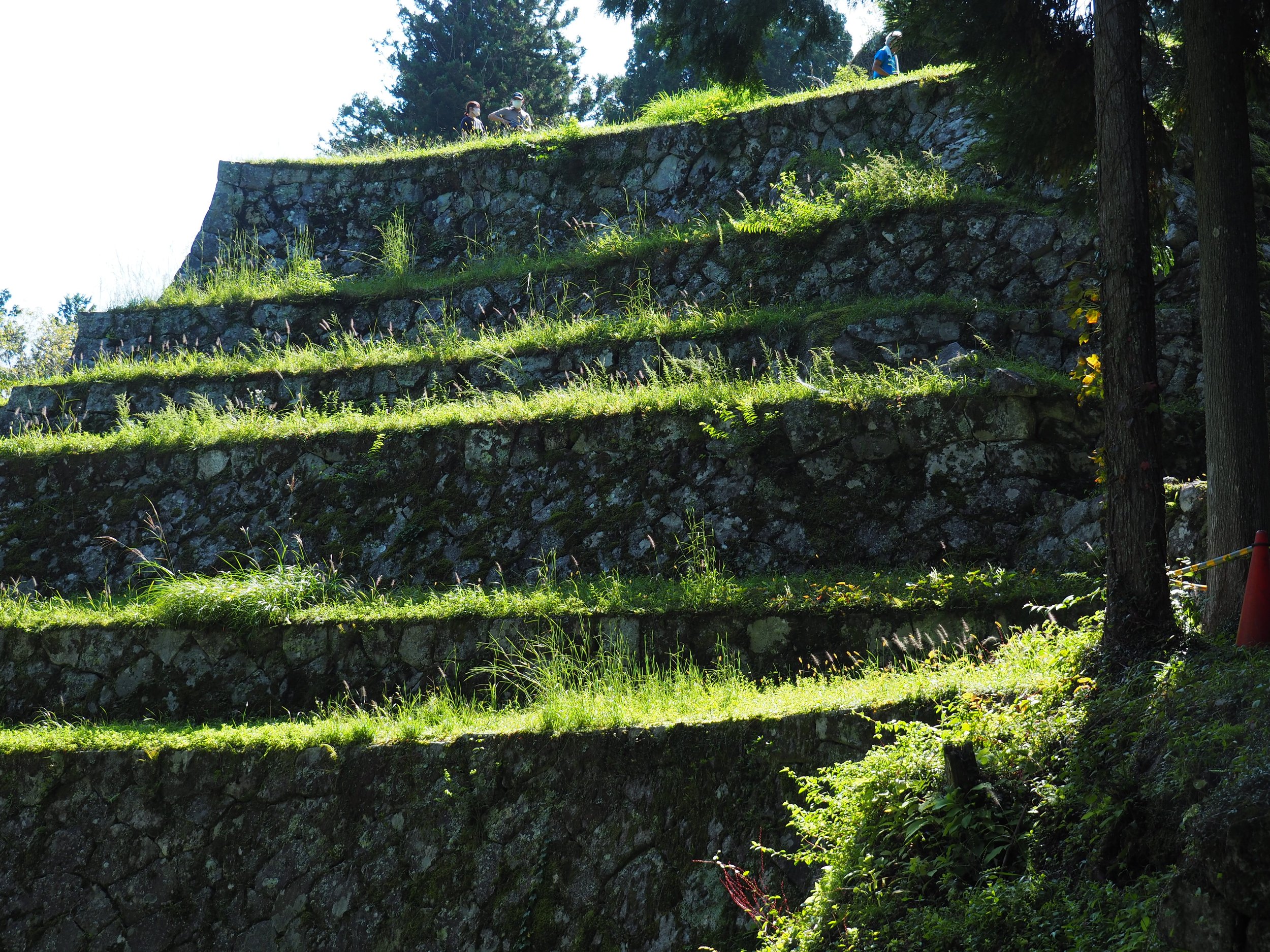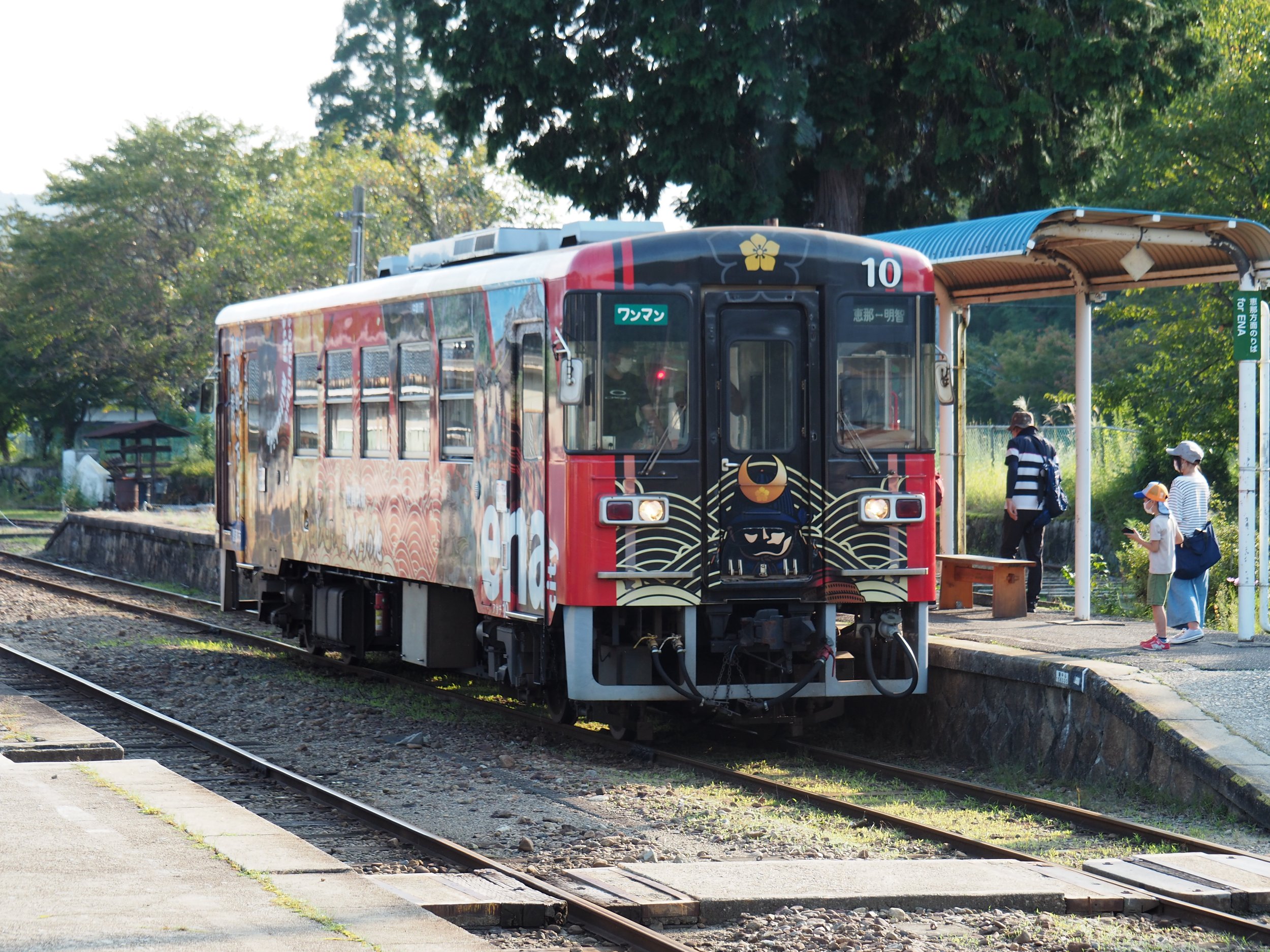Nakasendo
中山道
Semi Guided 7 Day Tours
In our opinion this is truly the best way to see the Japanese countryside. A combination of self guided days and guided days give you both the time and space to relax and walk quietly and thoughtfully by yourselves, but also an opportunity to escape from any other tourists and allow a local professional guide to show you something you could never find by yourselves. Really Rural Japan live local and pride ourselves on being the specialists of the Nakasendo and surrounding area. With our experience and expertise we have a few different semi guided tours to fit the needs and interests of our guests as well as the seasonal changes throughout the year. If you are not sure, contact us to find out what we think is the best tour package for you.
Due to high demand these tours are best booked 6-12 months in advance.











Nakasendo + Crafts
7 Day Semi Guided
-
The first day on your tour of the Nakasendo is a travel day. Arrive in Matsumoto at your own pace and check into your conveniently, clean located hotel. Your welcome pack will be waiting for you when you check. It will include our guidebook to the Nakasendo, bear bells, your itinerary and more. You should head out for a dinner of your choosing and get some rest because tomorrow the adventure really begins. If you arrive in Matsumoto with time to spare, take a look around the town. Matsumoto is home to Matsumoto Castle which is over 400 years old and some beautiful shopping streets in the heart of the old castle town.
-
For a full tour description, click here: Yabuhara to Narai
Description: The second most famous hike on the Nakasendo goes between the sleepy village of Yabuhara and the stunning post town of Narai Juku. This wonderful forest hike takes you over the Torii Pass, a pass once renowned for being one of the steepest, coldest and most challenging sections of the Nakasendo. These days, without palanquins to carry, it is very manageable, so please don’t fear too much. At the top of the pass you will find its namesake; a shinto torii gate marks the entrance to a shrine dedicated to the Ontake faith. From here, on a clear day, the peak of Mount Ontake, Japan’s second tallest volcano, can be seen over the mountains. Narai and Yabuhara prospered in the Edo period due to the difficulty of the Torii Pass. As a result the surviving town of Narai is impressively long to accommodate all of the travelers that wanted to rest before or after the pass. For a possible extension, Hirasawa is a town full of lacquerware craftsmen 2km away from Narai.
Stay: Narai, Kiso Fukushima or nearby
-
The Ontake Kodo (12km)
For a full tour description, click here: Ontake Kodo
Description: An ancient pilgrimage route climbing in the lower regions of Japan’s 2nd biggest volcano, Mount Ontake. Expect mysterious mountain shrines, ancient trees, mind blowing waterfalls all steeped in ascetic Buddhism. The village of Otaki serves as the backdrop of this incredibly atmospheric and wholly out-of-this-world hike. Passing by Satomiya Shrine and then Omata Sansha, we hope you like stairs, because these two spots have a lot of them. The seemingly endless stone staircases leading to these two sacred sites of the Ontake Faith. Then two towering waterfalls and more mountain shrines make up the rest of an extremely immersive hike.
Stay: Otaki Village, Kiso Fukushima, or nearby.
-
For a full description click here: Kiso Fukushima Walking Tour
Kiso-Fuksuhima is the cultural and commerce capital of the Kiso Valley. However, because the Kiso Valley is so remote and sparsely populated, it is still a small quiet mountain town tucked away in the north of the Kiso Valley. During a day in Kiso Fukushima, the plan is highly customisable. You can enjoy historical museums, relaxing temples, taste sake at a brewery, go walking in the ancient town, or go for a hike in the beautiful mountains.
Stay: Kiso Fukushima or nearby
-
For a full tour description click here: Silk Museum
In Komagane City of the Ina Valley, at Kubota Textiles, the Kubota family run a traditional tsumugi-silk fabric factory, which has been in business for over a hundred years. Kubota textiles dye the silk themselves with natural ingredients and all of the fabric is handwoven on traditional looms in house. The results are extremely beautiful lengths of fabric which will be bought and made into some of Japan’s most luxurious kimono. In the day and age of synthetics, factories like these are rare but offer us an incredible insight into the Japan of old. After a tour of the factory, you can get hands on a loom and finish it all off with a cup of matcha and a locally made Japanese sweet.
Wara-zaiku - For a full description click here: Wara-Zaiku
Wara-zaiku is an ancient craft which almost went extinct. It is the art of weaving both religiously significant and everyday items out of rice straw. This experience takes place in the studio of one of Japan’s leading Wara-zaiku protectors. Yuji Sakai is the artist employed to weave Japan’s grand sumo tournament rings among other things.
Stay: Komagane or nearby
-
For a full tour description click here: Komagane Ropeway
The Japanese Central Alps are an incredible range of mountains that separate the Kiso Valley and Ina Valley. Towering at 2,956m tall, Mount Kiso Komagatake is the tallest peak. The Komagane Ropeway is Japan’s fastest and highest gondola in Japan. After catching a bus and then a gondola to 2,612m, you can relax at the cafe and stroll around the base of the Senjojiki Cirque, or you can go alpine climbing from June to Oct and even snowshoeing in the winter. Open year round, this ropeway is an amazing chance to see Japan from great heights without having to climb up all the way.
Stay: Komagane or nearby
-
For a full description of the Tenryu Gorge click here: Tenryu Gorge
For a full description of the Washi/Mizuhiki workshop click here: Washi & Mizuhiki Workship
The day starts with a morning 5km walk around the stunning Tenryu Gorge. From suspension bridges to deep forests and stunning rock formations! This morning hike has a lot to see in a short space of time! After lunch it is time to get a bit craftsy. The town of Iida is Japan’s primary producer of mizuhiki. These are colorful chords tied in elaborate, decorate, auspicious ways. They originate from the town's former washi (paper) industry and on this special tour, the two crafts are combined. A truly immersive and intimate experience.
Stay: Hirugami Onsen, Tenryu Gorge, or nearby
-
For a full tour description, click here: Magome to Tsumago
Description: The most famous hike in this region is popular for a reason. It runs between the fairytale-like villages of Magome and Tsumago. The walk between the two is littered with unbelievable beauty such as ancient tea-houses, cascading waterfalls, crystal clean rivers, cypress forests, cobblestone roads, and more.
Stay: Not included
-
Difficulty: 2/5
Season: Apr 1 - July 15, Sep 15 - Nov 31
-
$4,295 USD per person
Nakasendo + Deeper Hikes
7 Day Semi Guided
-
Before the hiking begins, the first part of your tour is a travel day. Arrive in Nakatsugawa at your own pace and stay the night in a conveniently located, clean hotel. Your welcome pack will be waiting for you when you check. It will include our guidebook to the Nakasendo, bear bells, your itinerary and more. You should head out for a dinner of your choosing and get some rest because tomorrow the adventure really begins.
-
For a full tour description click here: Tosando
The Tosando is known for being one of seven of Japan’s first ever official roads. It was written about in Japan’s first ever texts written over 1,300 years ago. The Tosando lead all the way from the ancient capital of Omi (modern day Shiga Prefecture), to Mutsu in the north of Japan in modern day Miyagi Prefecture. This road was over 1,000 km long and was used by Japan’s soldiers of the time as they battled for control of the mainland with the native Emishi in the north of the country. This hiking tour takes place on the Misaka Pass, a section of the ancient road known to be the harshest, cruelest and most difficult section of all. Many folk stories and pieces of art were born out of the legendary mountain pass, which was known to experience sudden thunder storms and thick fogs making traveling there extremely treacherous. Artworks from ancient haiku poems to Japan’s (and the world’s) oldest ever novel, The Tale of Genji, the Misaka Pass is featured, showing the infamy of the mountain road.
Stay: Nakatsugawa, Magome, or nearby
-
For a full tour description, click here: Magome to Tsumago
Description: The most famous hike in this region is popular for a reason. It runs between the fairytale-like villages of Magome and Tsumago. The walk between the two is littered with unbelievable beauty such as ancient tea-houses, cascading waterfalls, crystal clean rivers, cypress forests, cobblestone roads, and more.
Stay: Nagiso, Tsumago or nearby.
-
For a full tour description, click here: Seinaiji Kaido
Description - The Seinaiji Kaido is an ancient road developed in the early 1500s by local samurai for military conquests. It connected the Nakasendo in Tsumago Juku with the southern end of the Ina Valley. As the Edo period (1603-1867) began and Japan became relatively stable and peaceful, the Seinaiji Kaido was used by all kinds of people, from local peasants transporting to goods to government officials and pilgrims too-ing and fro-ing around the country. On the Nakasendo you can feel the life of the Daimyo, the Princess or the Magistrate. On the Seinaiji Kaido you can feel the life of the farmer, the peasant, or the broke pilgrim traveling for travels sake.
Stay: Achi, Iida, Nagiso, or nearby
-
For a full tour description, click here: Tsumago to Nojiri
Description: This longer rambling hike of the Nakasendo passes actually passes through 3 post towns of the Nakasendo, Tsumago, Midono and Nojiri. This particular section of the Kiso Valley was particularly prone to floods and landslides and so while the Nakasendo, on a good year, would have followed the basin of the valley, times were not always good, and a sub-route was necessary. This sub-route is known as the Yogawa Michi or the road through Yogawa. A winding, mountainous route that takes you over the simply stunning, Nenoue Pass with its gentle stream amidst the forest. Expect to see beautiful agrarian views of the Kiso Valley, rice fields, meandering streams, and more on this simply beautiful hike southern Kiso. The hike can be adjusted to make it longer or shorter by starting/finishing in Tsumago or Nagiso Station.
Stay: Kiso Fukushima, Nojiri, or nearby.
-
For a full description click here: Kiso Fukushima Walking Tour
Kiso-Fuksuhima is the cultural and commerce capital of the Kiso Valley. However, because the Kiso Valley is so remote and sparsely populated, it is still a small quiet mountain town tucked away in the north of the Kiso Valley. During a day in Kiso Fukushima, the plan is highly customisable. You can enjoy historical museums, relaxing temples, taste sake at a brewery, go walking in the ancient town, or go for a hike in the beautiful mountains.
Stay: Kiso Fukushima or nearby
-
For a full tour description, click here: Ontake Kodo
Description: An ancient pilgrimage route climbing in the lower regions of Japan’s 2nd biggest volcano, Mount Ontake. Expect mysterious mountain shrines, ancient trees, mind blowing waterfalls all steeped in ascetic Buddhism. The village of Otaki serves as the backdrop of this incredibly atmospheric and wholly out-of-this-world hike. Passing by Satomiya Shrine and then Omata Sansha, we hope you like stairs, because these two spots have a lot of them. The seemingly endless stone staircases leading to these two sacred sites of the Ontake Faith. Then two towering waterfalls and more mountain shrines make up the rest of an extremely immersive hike.
Stay: Otaki Village, Kiso Fukushima, or nearby.
-
For a full tour description, click here: Yabuhara to Narai
Description: The second most famous hike on the Nakasendo goes between the sleepy village of Yabuhara and the stunning post town of Narai Juku. This wonderful forest hike takes you over the Torii Pass, a pass once renowned for being one of the steepest, coldest and most challenging sections of the Nakasendo. These days, without palanquins to carry, it is very manageable, so please don’t fear too much. At the top of the pass you will find its namesake; a shinto torii gate marks the entrance to a shrine dedicated to the Ontake faith. From here, on a clear day, the peak of Mount Ontake, Japan’s second tallest volcano, can be seen over the mountains. Narai and Yabuhara prospered in the Edo period due to the difficulty of the Torii Pass. As a result the surviving town of Narai is impressively long to accommodate all of the travelers that wanted to rest before or after the pass. For a possible extension, Hirasawa is a town full of lacquerware craftsmen 2km away from Narai.
Stay: Not included
-
Difficulty: 2/5
Season: Apr 15 - July 15, Sep 15 - Nov 31
-
$4,095 USD per person
Prices
Our 7 day semi guided tours range from $4,095 USD to $4,295 USD. Please check the tour “price” bars above to see per person prices for each tour.
For solo occupancy = + $1,100
Children accompanying adults (4 -11) = Adult price - $300
Infants (0-3) = $700
What’s Included
Accommodation along the Nakasendo: 5 nights
Meals: 5 breakfasts and 2 dinners
Guides on specified days
Luggage delivery between all inns (1 bag per person)
Really Rural Japan’s guidebook “Hiking the Nakasendo” featuring maps, walking guides, history, travel advice, and more.
A custom made itinerary written just for your tour
Local telephone support
Bear bells (1 per person)
Spikes (winter tours only)
Cultural Experiences (when specified)
What’s Not Included
Lunches
Drinks
Transportation - To build time flexibility into your trip we like to leave the transport up to you. Don’t worry, your itinerary will be full of the advice you need to get around.
The Process:
Get in touch - Get in touch with us through our contact us form and let us know the name of the tour you would like to do (ex. “Nakasendo + Craft: 7 Day Semi Guided”), as well as the other necessary information.
Confirm and finalise the plan.
Bookings - Now we can move onto bookings. We will try, as much as we can, to faithfully produce the itinerary. If something does not work, we will let you know as soon as possible and work around it.
Deposit - Once the bookings are made, a 20% non-refundable deposit is required to lock the tour in. Once this has been paid for, we will send you an online PDF copy of our guidebook “Hiking the Nakasendo” as well as a PDF detailed itinerary.
Final payment - Full payment of the remainder of the amount will be due 60 days prior to a tour. Failure to pay at this point could lead to cancellation of the tour.
Arrive and receive your welcome packs - At the specified hotel on Day 0 of your tour, your welcome packs will be waiting for you. This will include a physical copy(s) of the guidebook, bear bells, a detailed itinerary, and more.
Enjoy! - The adventure begins. Time to relax and have some fun!
Payments, Deposits & Cancellation Policy:
To lock in a booking, we require a 20% non-refundable deposit for the tour as soon as the bookings have been made. Then, full payment must be made at least 60 days in advance of the tour. If you are booking within 60 days of your tour, the total price of the tour must be paid immediately. Payments will be requested via credit card payable invoices. Our cancellation policy is as follows:
Effective once bookings are confirmed and agreed upon: 20% (non-refundable)
60 days prior: 35%
30 days prior: 70%
15 days prior and beyond: 100%
Should the cancellation come from our side due to unforeseen circumstances, 100% of the fee will be refunded. On rainy days, tours will go ahead unless the weather can be deemed dangerous, although our guides will do their best to offer alternatives on guided days if you prefer to stay dry.
Accommodation
Your accommodation will be some combination of minshuku (family run inn), onsen ryokan (traditional hot spring accommodation), and hotel. Sometimes you may need to share bathrooms with other guests, especially in the family run inns.




